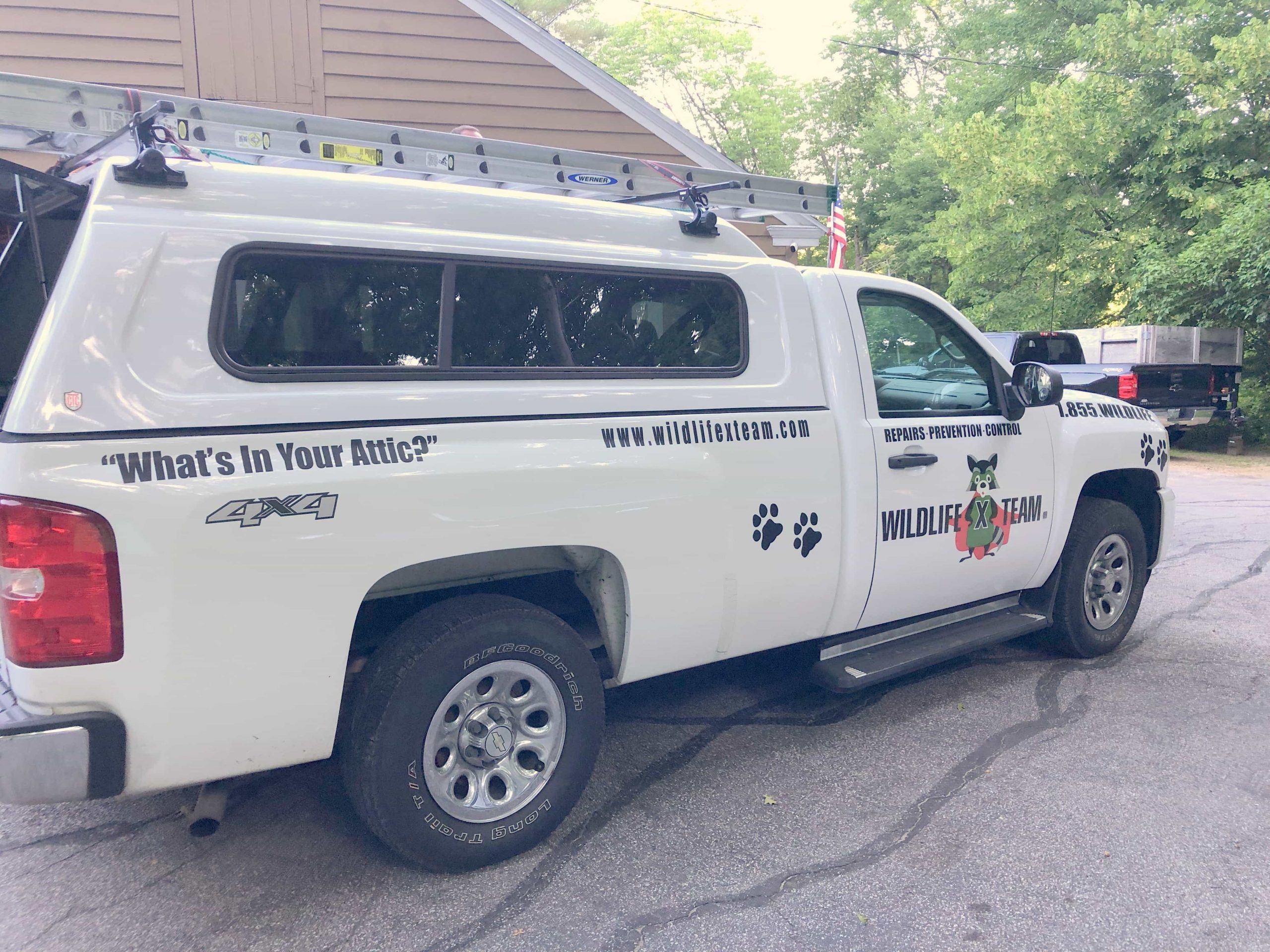Wildlife Removal New Hampshire

Call for Your Exclusive Wildlife Inspection Report.®
WOODCHUCK REMOVAL
Woodchucks, also known as groundhogs, are peculiar animals. These wildlife pests are a menace both in the yard and in the home. They dig up crops to feed on roots, chew on piping and plumbing systems, and pick fights with pet animals. Woodchucks also burrow through the ground and can damage the foundation of the building.
TIPS ON WOODCHUCK REMOVAL
You can remove woodchucks from your house and yard using any of the following methods:
- WOODCHUCK TRAPPING: You need first to identify the general location of the woodchuck. You can easily do this by scouting for areas of damage in your living space or yard. Know the laws protecting wildlife in your state and adhere to them. Use live traps and take time to put on protective clothing. Keep these tips in mind:
- Mask both the inside and outside of the trap with leaves to lure the woodchuck into the trap. This will camouflage the trap and make the woodchuck less suspicious and more comfortable to get into the trap.
- Wear gloves and other protective materials when setting up the trap to avoid transferring your body smell to the cage. Woodchucks have a keen sense of smell and can easily pick up your body scent.
- Avoid unnecessary twists and turns after you have successfully trapped the woodchuck, as this will agitate it into fighting, biting, or scratching. You can place a heavy stone on the trap lid to avoid surprise jiggling and accidents.
- Choose your bait. Use baits that easily entice woodchucks like fruits and fresh vegetables.
- Practice for a few days. Keep putting fruits and vegetables inside the trap and letting the woodchuck feed without trapping it. This will make the critter less suspicious and more vulnerable.
Be sure to only use humane traps and methods for trapping woodchucks or call professionals at Wildlife X Team New Hampshire for help. We will be glad to help in the capture and relocation of woodchucks.
- REMOVE WOODCHUCK ATTRACTANTS: Woodchucks, like all animal pests, want good food, safety, and warmth. When your home offers these three, they invite themselves in and become unwanted, live-in guests. You can make your home less appealing to them by:
- Removing their sources of food, including favorite plants, fruits, food remnants, and pet food.
- Harvest fruits and crops as soon as they get ripe, without waiting for them to fall to the ground. The smell of rotten and overripe fruits is a major woodchuck attractant.
- Remove clutter and debris piles. Make sure your yard is neat and in order. This gives the woodchuck less room to hide and nest.
- SEEK PROFESSIONAL HELP: Fixing the woodchuck mess yourself may be stressful and tiring. However, Wildlife X Team New Hampshire has professionals with woodchuck trapping skills and the necessary equipment for the job. We are efficient and professional and offer quality services to our clients.
Wildlife X Team offers professional services to residents in New Hampshire and surrounding areas like:
Meredith, Alton, Alton Bay, Center Harbor, Ossipee, Center Tuftonboro, Gilford (Govt. Isl), Gilmanton, Gilmanton Iron Works, Holderness, Laconia, Lochmere, Loudon, Moultonborough, Plymouth, Hebron, Sanbornton, Tilton, Winnisquam, Wolfeboro, Wolfeboro Falls, Ashland, New Hampton, Rumney, Bristol, Danbury, Andover, Franklin, Salisbury, Belmont, Hill, Bridgewater, Grafton, New London, Sunapee, Wilmot, Holderness, Squam Lake, Lake Winnipesaukee, Newfound Lake, Sunapee Lake, and Silver Lake.
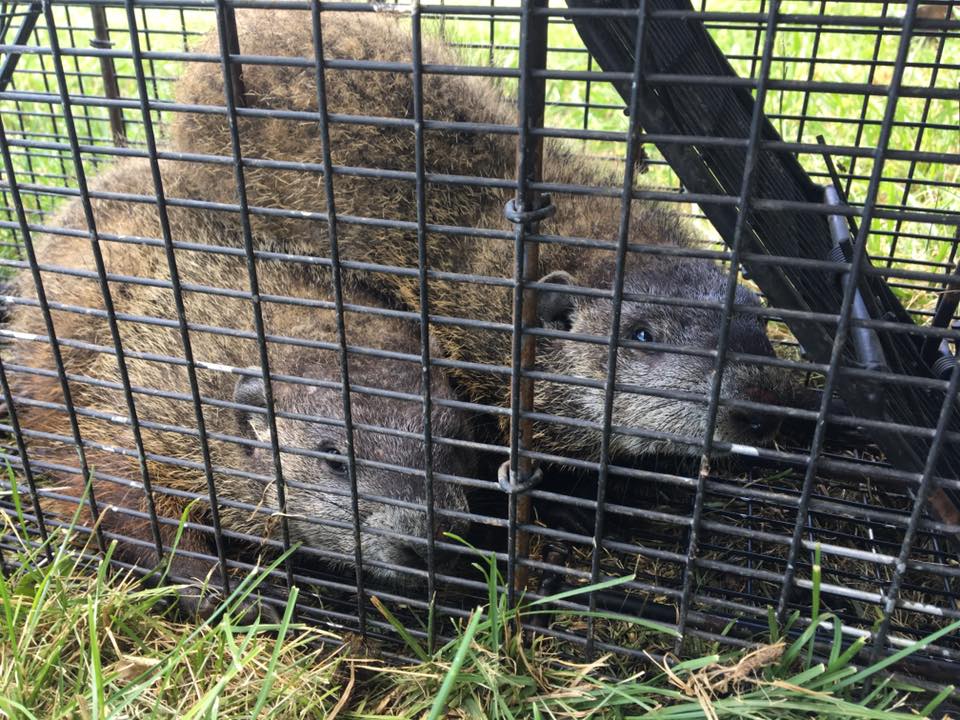
The Best Ways to Rid Your Yard of a Woodchuck
Marmots. Groundhogs. Woodchucks. Whatever you call them, they’re a major pest in gardens and yards across the United States. With a diet consisting of flowers, vegetables, twigs and bark, plant seedlings, and bugs, your garden is less a home than a veritable feast for a hungry woodchuck. Therefore, evicting these furry fiends is harder than it sounds.
Plus, they’re fearsome tunnellers, digging down into gardens and ruining beautiful lawns. That’s why you should take precautionary methods to help ward off groundhogs. Or, if you suspect one has ventured onto your property, take immediate action to remove them.
That’s where Wildlife X Team New Hampshire comes in. We’ve got extensive experience removing all creatures from homes and yards, including woodchucks. Plus, our experts can quickly diagnose any potential attractants, reducing future occurrences. However, before you get in touch, check out the following excellent advice.
- Use a box trap
The best – and most humane – method of capturing a pesky groundhog is the box trap. It’s a fairly simple contraption, consisting of a cage with a mechanism that once triggered traps the woodchuck inside. The success is all in the bait. Effective baits include strawberries, peaches, lettuce, cucumber, or green beans. However, most fruits and vegetables will work.
Remember to place the bait towards the back of the trap so the groundhog fully enters. You don’t want to be merely feeding the marmots you’re trying to evict.
Aside from box traps, there are lethal traps such as snap traps. These leave a significant mess, however. They work by slamming down on the animal, crushing or choking it. In some areas, these traps are illegal. So, if you plan to use a lethal trap (which we don’t advise), check your local legislation.
- Try a repellent
Groundhogs have a fantastic sense of smell. Plus, they’re known to dig into the ground, meaning placing repellents around a yard can work effectively. Common repellents you might find around your home include ammonia, red pepper flakes, garlic, and talcum powder.
When using a repellent, think carefully about where you want the groundhog to go. Then, place repellents at the entrance to their burrow nearest to your property. Over the following days, work through the other entry points until eventually there is only the farthest exit left. Be careful not to make the woodchuck a neighbor’s problem, though. After a few days, you’ll have removed all the woodchucks; then fill in the burrow holes.
- Smoke them out
Using fumigants is a popular strategy. First, seal all the entrances and exits to a burrow except one. Then, using smoke or a fumigant with a carbon monoxide cartridge, fill the burrow. Remember, however, that fumigation can also be dangerous to humans and pets, as well as causing lawn damage. So, be careful.
Alternatively, you can flood the tunnels with water. That’s likely to get an immediate reaction. Just don’t send the woodchucks fleeing into your home. That’ll only exacerbate the situation.
- Take preventative action
Once you’ve removed the groundhogs from your land using your method of choice, take preventative action. That may mean removing all sources of food, such as from garbage cans or pet food. However, if you have a vegetable garden or plants, there’s still food available.
Instead, build a significant fence, buried up to 12 inches into the ground. This will act as a permanent, functional barrier to your property. Combine with an electric wire for maximum effectiveness.
Also, planting herbs like mint, sage, basil, rosemary, thyme, chives, oregano, and lavender can be efficacious. These herbs have a strong aroma that groundhogs dislike. If you do plant them, try to place them around the perimeter of your property or at key entry points.
Not all homeowners feel comfortable trapping or repelling a wild animal, especially considering the risk of diseases and parasites. If that’s you, please contact Wildlife X Team New Hampshire. We’re a professional and effective animal trapping service in New Hampshire with a proven track record of customer satisfaction. Animal capture is a skill that requires extensive knowledge and experience. Don’t battle on alone. Give us a call.
We are professionals that render quality and excellent services at affordable rates. Call us today for more information.
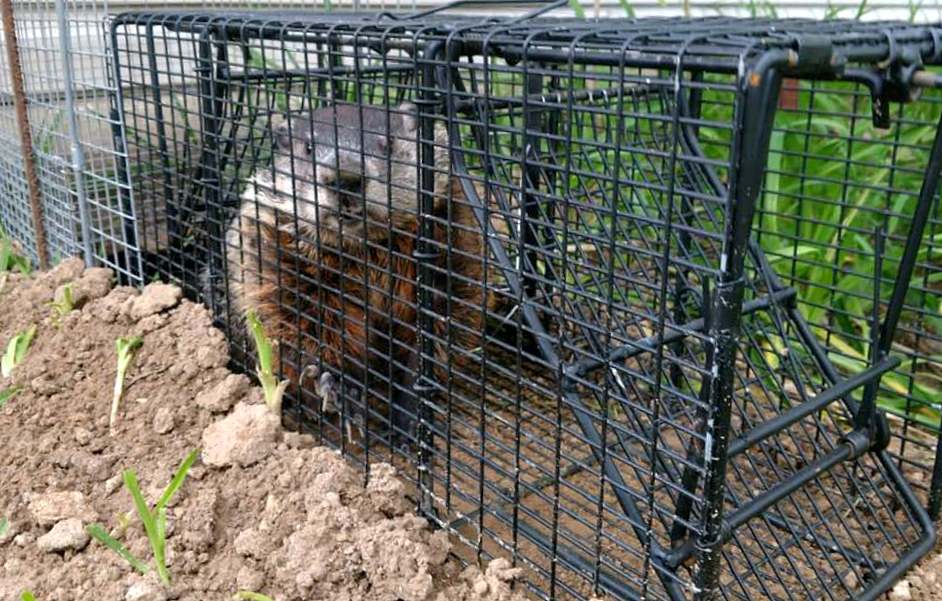
How to Trap a Woodchuck
Woodchucks are very energetic pests, especially on the outer part of the homes; gardens, farms, lawns, etc. Being great herbivores, woodchucks will generally nest close to an abundant food source and even reproduce and increase their population.
Although woodchucks are not as sly or difficult as Raccoons or Rats, they can still be a headache to contain. A good way to deal with Woodchucks is to trap them, as they are very sensitive to human presence and are good burrowers.
Trapping Woodchucks
Getting a trap for woodchucks can be tricky, but it should not be a problem once you understand their patterns. You can use any form of trap, including;
- Gum traps
These traps become active when you take off the protective openings and expose them to air. They have strong adhesives that bind any such animal unlucky enough to step on it. The animal will be tightly held in the trap until the person gets it.
- Door Trap
These traps lure the animal into a cage with sweet-smelling/looking vegetables/foods. As soon as the animal enters the cage, the mechanism is triggered by (pressure), and the door snaps shut.
- Inhumane traps
These traps are designed to injure and kill an animal. Most people deploy these traps for ferocious animals or pests. However, there are laws in certain states and regions prohibiting the use of inhumane traps.
Why it is a bad idea to chase a Groundhog
Most people believe that scaring a woodchuck (Groundhog) is a good idea and even proceed to ambush them at the entrance of their holes. However, this is a terrible idea because Groundhogs are ferocious and skillful diggers.
- Good diggers
When pursued, they will run into their intricately crafted maze. Beneath the earth, they are one of the super-architects. They design their nests to have various exits from where they can escape predators like a snake.
- Keen sense of smell
Also, Groundhogs give a warning sound when they are chased by humans or a predator, which will alert others nearby and grant them safety. If you stand in an ambush by their holes, you may well be disappointed for the time wasted
Also, Woodchucks have a keen sense of smell that can allow them to detect and stay away from predators as long as necessary. This is one of the main reasons a trap is the most effective way to catch them unawares.
When should I trap a Woodchuck?
The season is just as important as the trap you get woodchucks. The best time to prepare surprises for woodchuck is during the spring.
- Fewer Woodchucks to deal with
At this time, they are active but are not yet breeding. It is always essential to trap them before the breeding season; this way, you can be sure no other younglings are waiting to cause havoc.
- Easy to inspect
Another benefit to trapping them in the spring is that their tunnels are easier to spot at this time. Since there are hardly any leaves or foliage, the ground is bare and easy to inspect.
- Easy to bait
The spring season is the easiest to bait a woodchuck. Since their favorite food is only just coming up, they are extra hungry at this time of the year. It means any vegetable or fruit you bait them with will easily attract them and easily fall for it.
Wrapping Up
When using traps, you must be sure that you constantly check on them. It is inhumane to trap an animal and leave it without food/water and expose it to other prey for long periods. Sometimes it is difficult to employ a DIY method when dealing with woodchucks, so people contact us to trap woodchucks for them.
Get Quote for Your Exclusive Wildlife Inspection Report.®


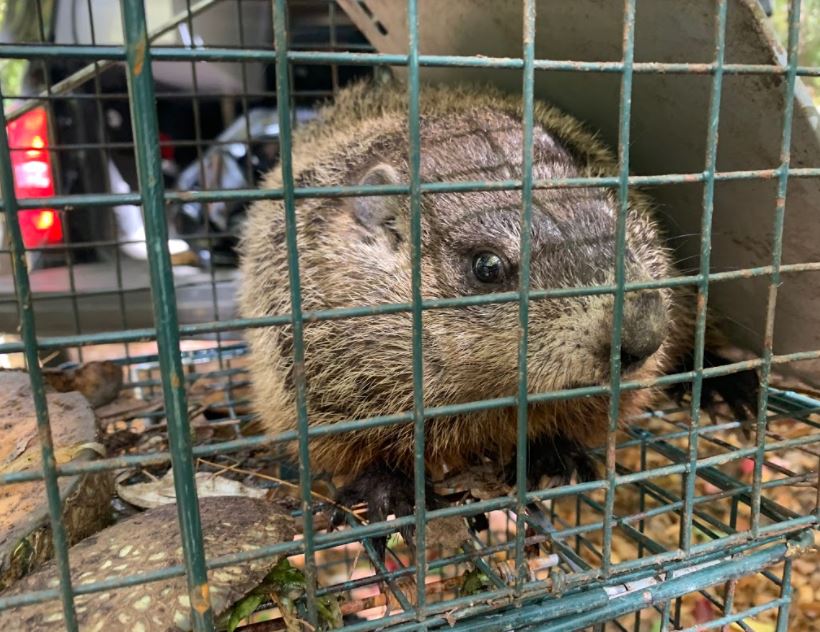
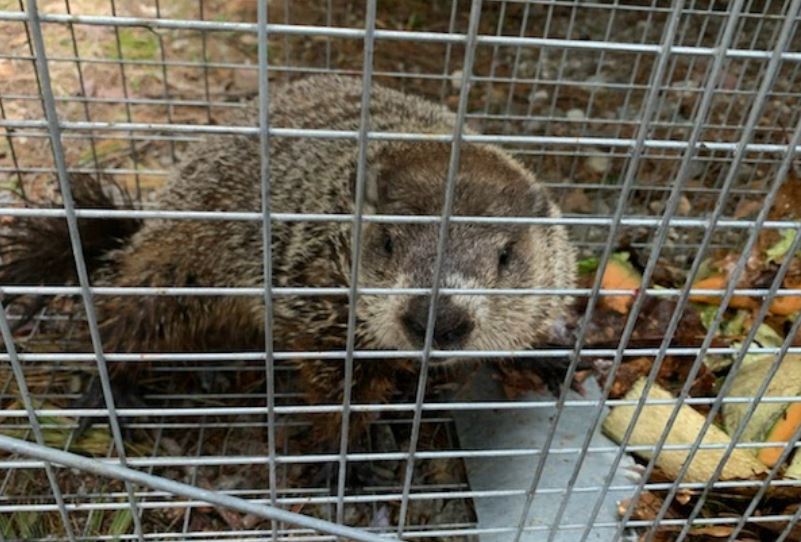
Call for Your Exclusive Wildlife Inspection Report.®


